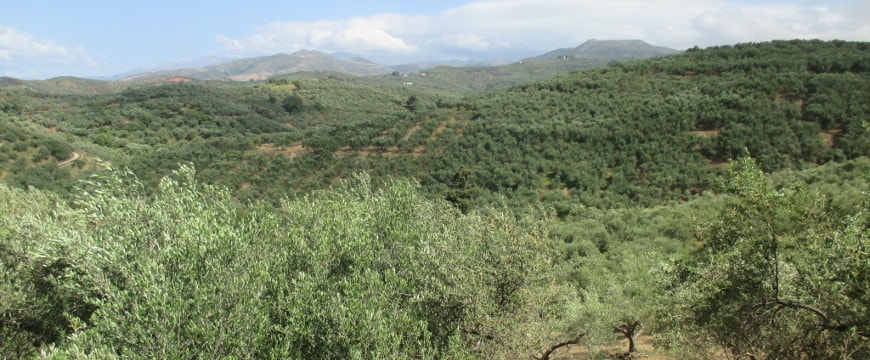Greece typically produces the third largest amount of olive oil in the world, after Spain and Italy—around 300,000 metric tons per year. Greeks consume more olive oil per capita than anyone else in the world—almost 13 kilograms annually in 2013-14 according to the International Olive Council (IOC), and even more in certain regions.
Americans, on the other hand, consume less than 1 kilogram of olive oil per person each year, although the IOC reports that the USA has shown “spectacular growth in total consumption” during the past 25 years.
As long as many Greeks can remember, they have sold the olive oil they don’t need for their families and friends to agents who sell it to Italy in bulk. There, Greeks tell me, high quality Greek extra virgin olive oils are mixed with other olive oils to improve the blends from a number of countries that comprise much of what the world thinks of as premium “Italian” olive oil.
There are excellent olive oils composed only of very good Italian extra virgin oils, but those labelled “bottled in” or “imported from” Italy are likely to be partly Greek. Even so, Greek producers don’t get the credit, or the added value--what some might call fair pay, especially given the high production costs in Greece--for the extra virgin olive oils they sell in bulk for a small fraction of what consumers finally pay for their bottled olive oil.
According to a National Bank of Greece report (NBG), only 27% of Greek olive oil is bottled and branded in Greece, rather than sold in bulk or informally passed on to friends, while 50 percent of Spanish olive oil and 80% of Italian oil are standardized in their country of origin—although 80% of Greek olive oil is extra virgin, the highest quality, far more than anywhere else in the world.
However, in recent years increasing numbers of Greek olive oil producers, bottlers, and exporters have decided it was time to change that. They have been bottling extra virgin olive oils in Greece under Greek brand names, often in gorgeous packaging that wins design awards. They indicate the date and place of production so consumers can understand exactly what they’re getting, and precisely where it comes from. (PGI and PDO designations also help explain that.)
As more Greek producers focus on the steps required to create excellent olive oil—careful pruning, cultivation, pest control, harvesting, milling, bottling, and storage practices--many Greek extra virgin olive oils have been winning major awards at international competitions, attracting the attention of internationally known specialty stores and chains.
There are now “about 460 companies producing branded olive oil in Greece” (NBG). Bloomberg reports that “Greece is home to more than 520,000 olive growers, many of whom rely on traditional methods such as handpicking the fruit. Cold pressing, where a machine crushes the olives to extract the oil without the aid of heat or chemicals, is the norm.”
According to the NBG, olive oil accounts for 9% of the total agricultural production value in Greece (vs. 1% in Europe) and a higher percentage of GDP in Greece (0.4%) than in Spain or Italy. A third to two fifths of Greek olive oil is exported (NBG), and olive oil exports are key to the economies of regions such as Crete, where Agronews reports that olive oil accounts for nearly 50% of the total value of exports.
Parts of Greece are full of rolling hills, valleys, or plains covered with olive groves. There are times and places when the air is permeated with the smell of olives. So it is not surprising that “14% of [Greek] agricultural land [is] covered by olive groves”—a larger percentage than any other European country (NBG).
Please note: the photo of the Greek olive oil bottle that appears with the introduction to this article was provided by Kopos Extra Virgin Olive Oil.


